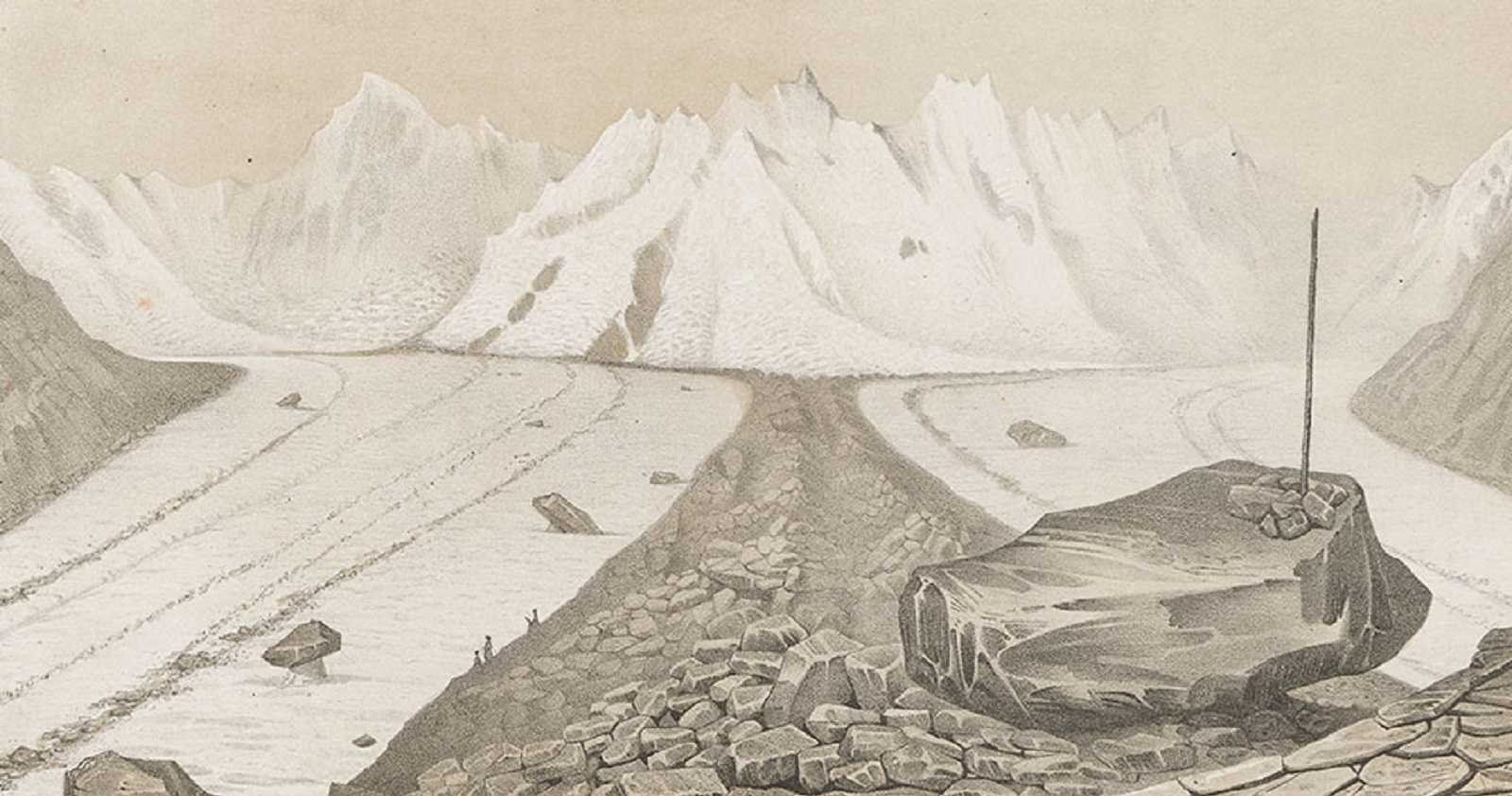Exhibition: The Icy World of Swiss Glaciers
Learn about the beginnings of glacier research in Switzerland. A selection of works from the Rare Books and Maps collection will be on display at a visiting exhibition at the Max Frisch Archive from 4 April to 6 May 2022.

Last year, Mount Vesuvius was at the centre of the first visiting exhibition at the Max Frisch Archive. This year, we are venturing into the icy worlds of the Alps. How did researchers begin to study the giant glacial areas high up in the mountains? What insights were they able to gain? And why does the world of ice continue to fascinate us?
Impressive works
A Switzerland without glaciers has always been unimaginable. The first natural scientist to research the ice giants was Johann Jakob Scheuchzer from Zurich in the 18th century. Within the scope of the exhibition, the ETH Library is displaying a work featuring the first picture of a Swiss glacier in a printed book. Other important works by natural scientists such as Gottlieb Sigmund Gruner, Louis Agassiz and Albert Heim highlight how our century-old fear of the mysterious glaciers has been replaced by a sense of fascination with these natural wonders.
Vernissage and guided tour
On Monday, 4 April 2022, the exhibition opens with a vernissage in the Reading Room Collections and Archives. Dr Rafael Ball, Director of the ETH Library, will give the opening speech. Afterwards, the curators of the Rare Books and Maps group will introduce the exhibition. A guided tour is available and open to anyone wishing to learn more about the object on display.
Key information
- Exhibition period: 4 April to 6 May 2022
- Location: Max Frisch Archive in the ETH Library, ETH main building, floor H, room H 26
- Opening hours: Monday to Friday, 10.00 a.m. to 5.00 p.m.
- Vernissage: Monday, 4 April 2022 at 5.00 p.m. in the Reading Room Collections and Archives
If you have any questions about the exhibition, please contact .
Rare Books and Maps
The holdings of the Rare Books and Maps collections of the ETH Library comprise more than 75,000 volumes of monographs and journals published between the 15th and 19th century and around 400,000 technical, topographic and natural science maps and atlases.